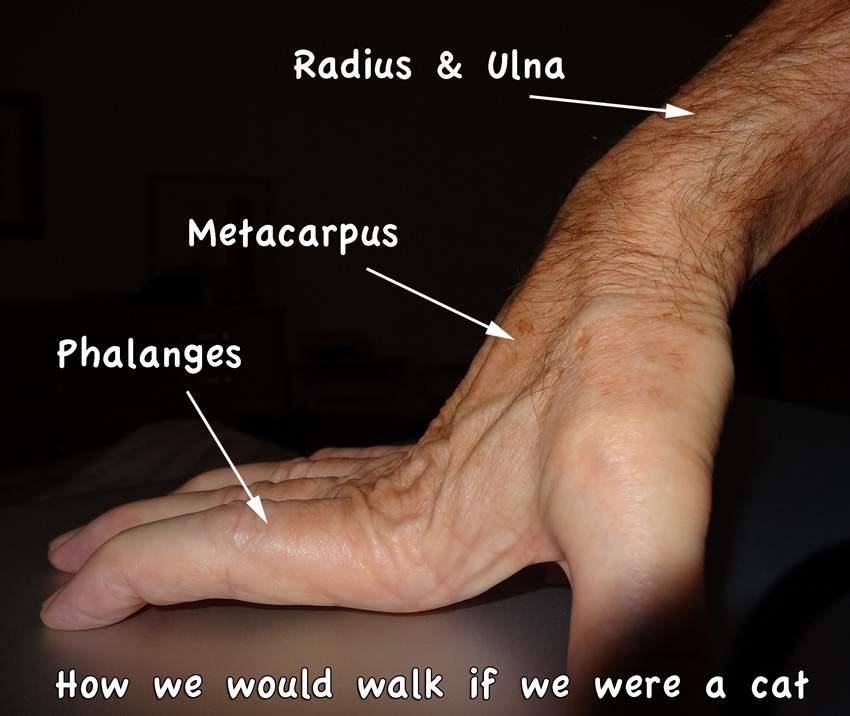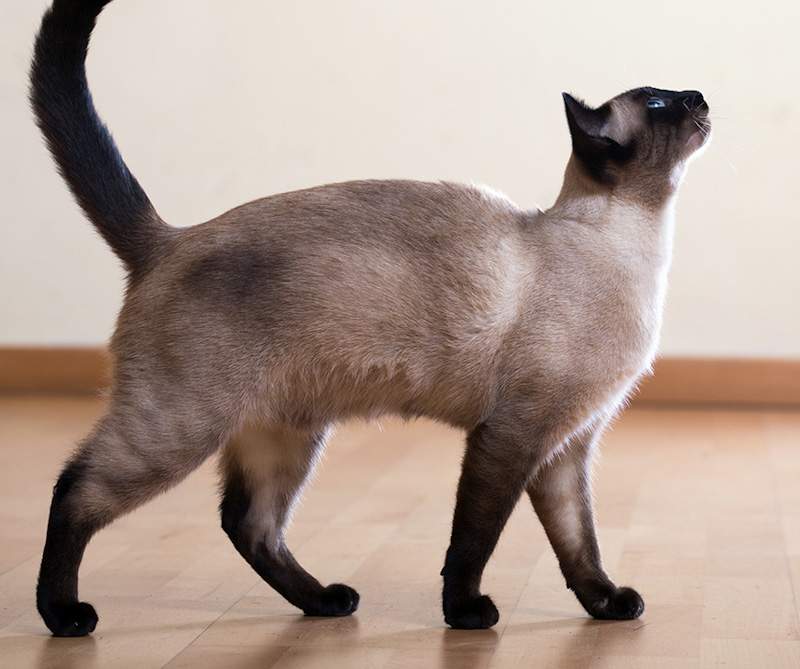
Here are 12 facts about the digitigrade foot posture of cats. Yes, most cat owners realise that their cats walk on their toes but if you were unsure, now you know 😃. There are three categories of foot posture (item 8 below). When cats walk, they have a direct register cat gait – the hind paws are placed into the spot left by the forepaws when walking.

- The cat’s body is a reflection of its diet which in turn is a reflection of its morphology i.e. its physical appearance and functionality which includes walking on their toes.
- Cats tiptoe around either when they walk or when they run. When they rest on their haunches sitting upright, they are resting on their feet rather than their toes.
- The phrase “to tiptoe” means to walk quietly and carefully. And so, this phrase is very applicable to the cat because they have evolved a digitigrade foot posture in order to move more quickly, more quietly and stealthily to enhance their prospect of catching prey animals.
- Walking on toes allows for more leverage as the foot becomes an extra lever. This enhances speed.
- The alternative to a digitigrade is a plantigrade. Humans are the best known plantigrade as we walk on our feet and not our toes. Although it is said that humans are somewhere in between plantigrade and digitigrade because we can go up on our toes and walk on our toes for quite long periods.
- When a cat walks on its toes it is walking on its metatarsals. The rest of the foot is lifted off the ground.
- Generally, digitigrade move more quickly and quietly than other animals.
- Also, generally, on average, tiptoed mammals tend to be about twice as massive as flat-footed mammals (plantigrades). Although, there are exceptions such as the human compared to the domestic cat with the human be much larger than a domestic cat.
- There are three categories of foot posture: plantigrades, digitigrades, and unguligrade (hooved). Unguligrade animals are typically bigger than either plantigrade or digitigrades and up to 57 times more massive than tiptoed animals.
- The soft toe pads of the cat’s paw distribute their weight over the balls of their feet helping to give them their fluid walking motion.
- The digitigrade foot posture of the domestic cat is one part of their overall anatomy making them perfectly suited for capturing and killing prey in which includes powerful forelimbs which can be rotated, forepaws with long claws, a lithe and flexible body and well-muscled hind limbs all of which allow them to move quickly, with agility and power.
- Declawing cats is particularly obnoxious because cats are digitigrades. The operation is bound to have a negative – sometimes severely negative – impact on their gait particularly as bone shards are often left in the paws.
Here is a digitigrade followed by a bunch of unguligrades 👍✔️😊.
Below are some more pages on feline evolution.

